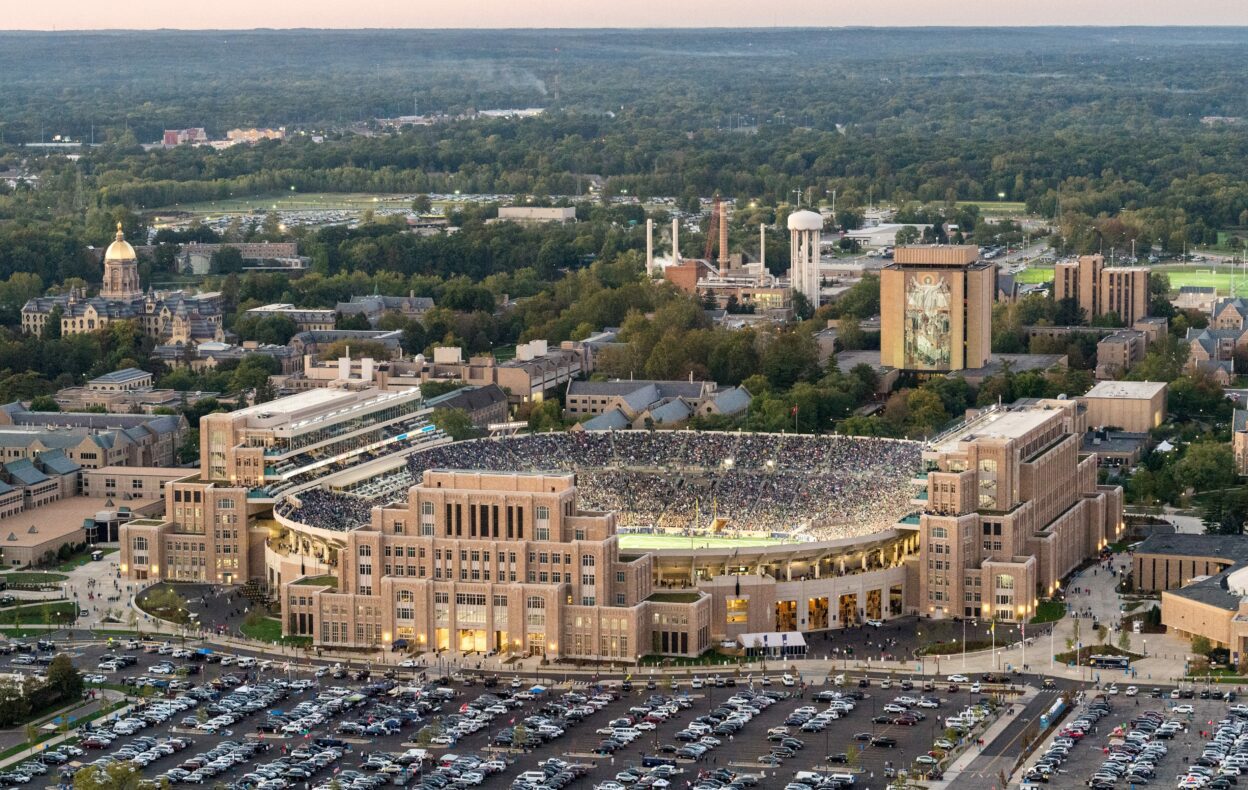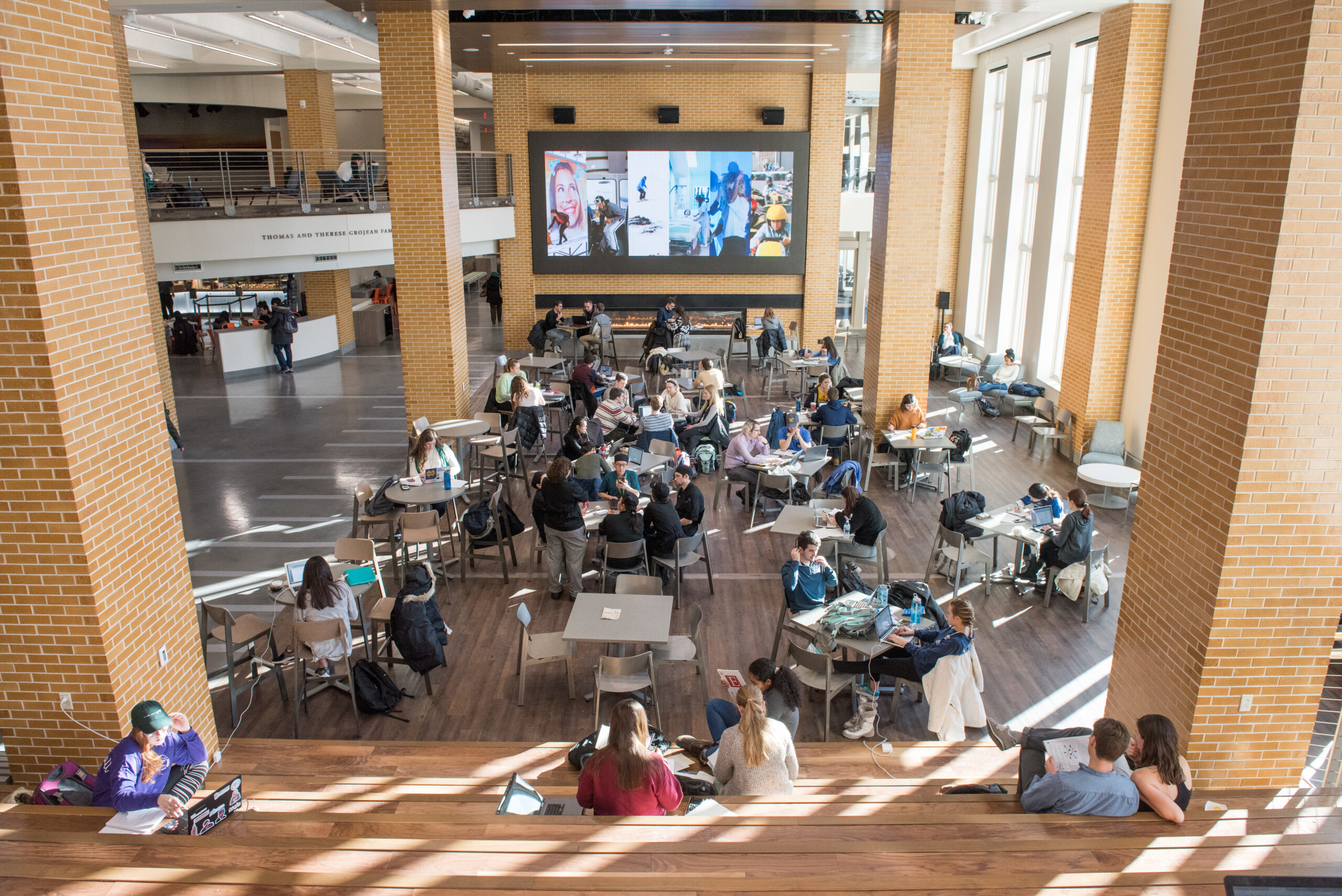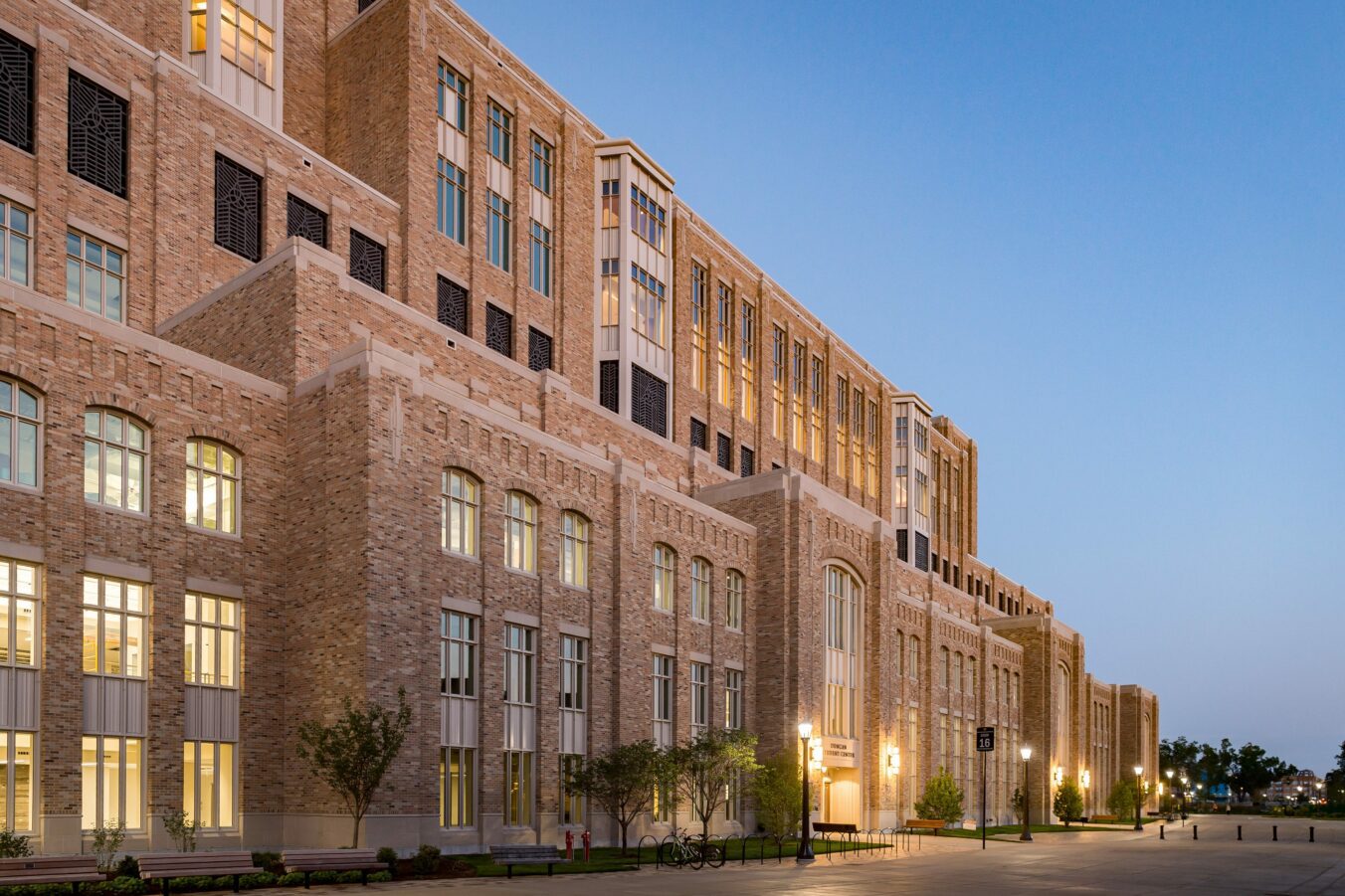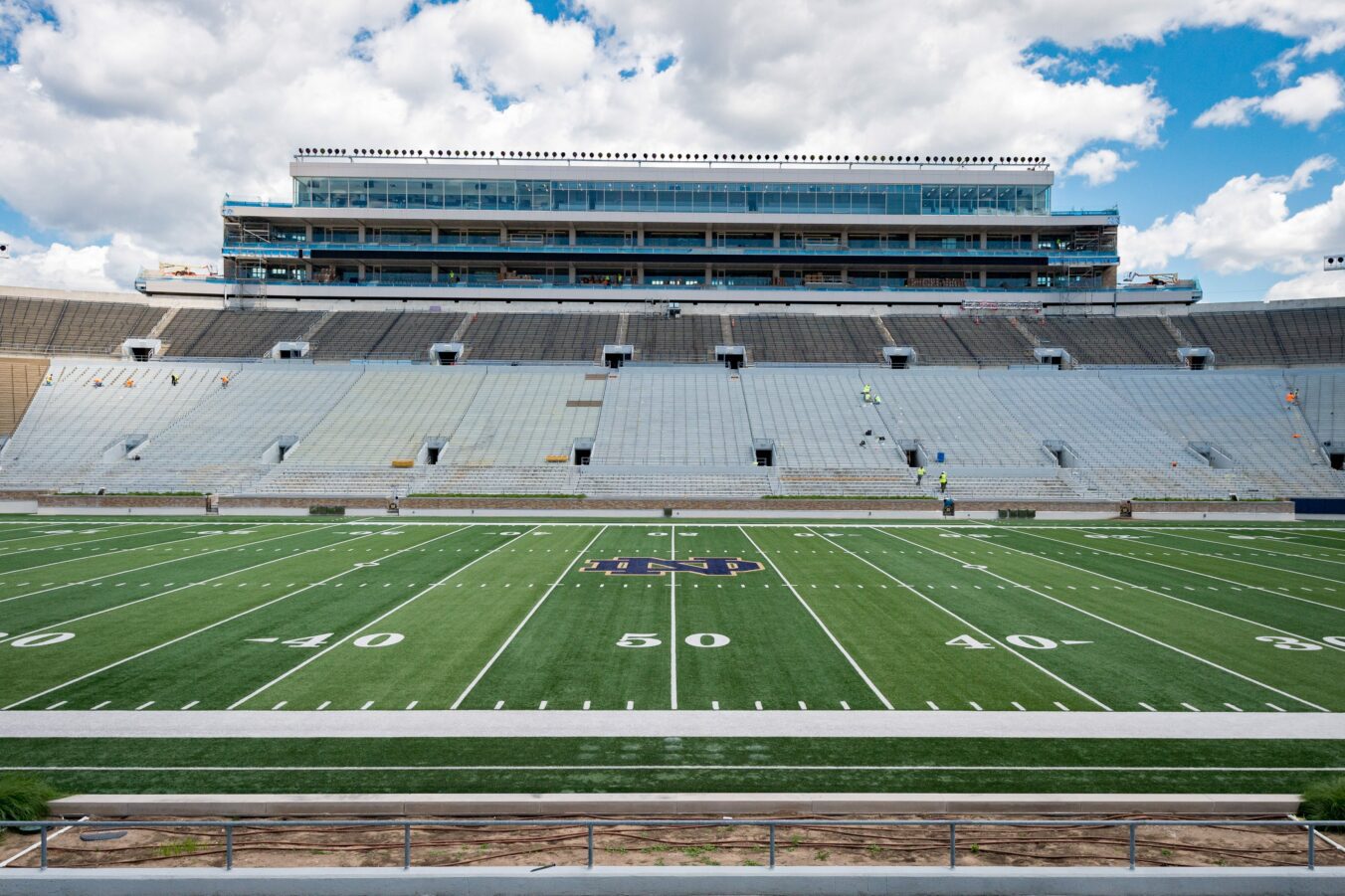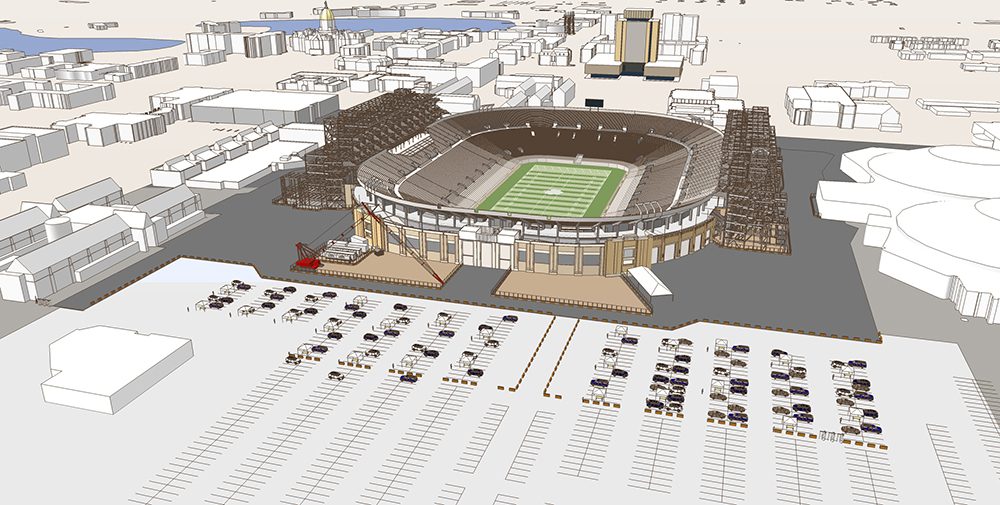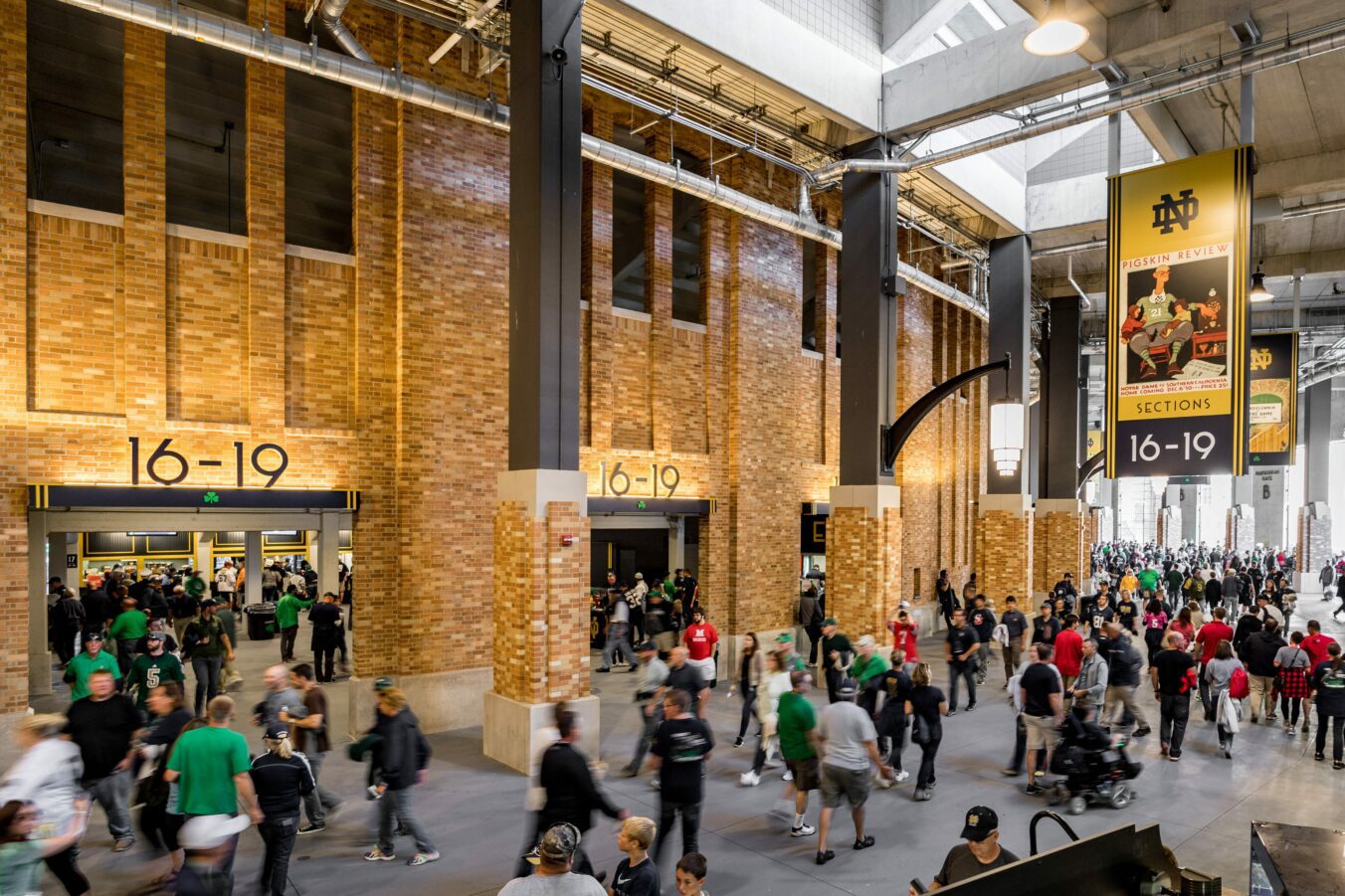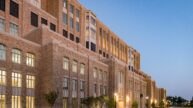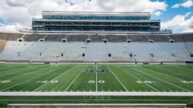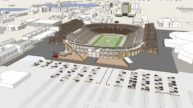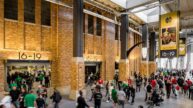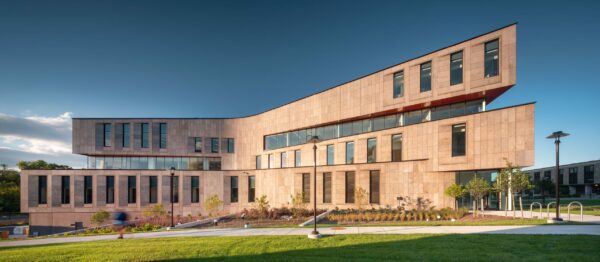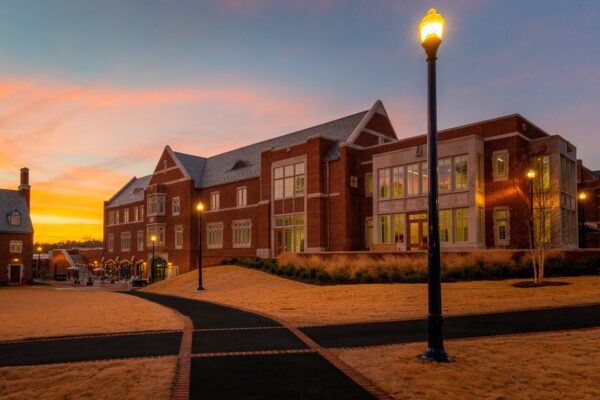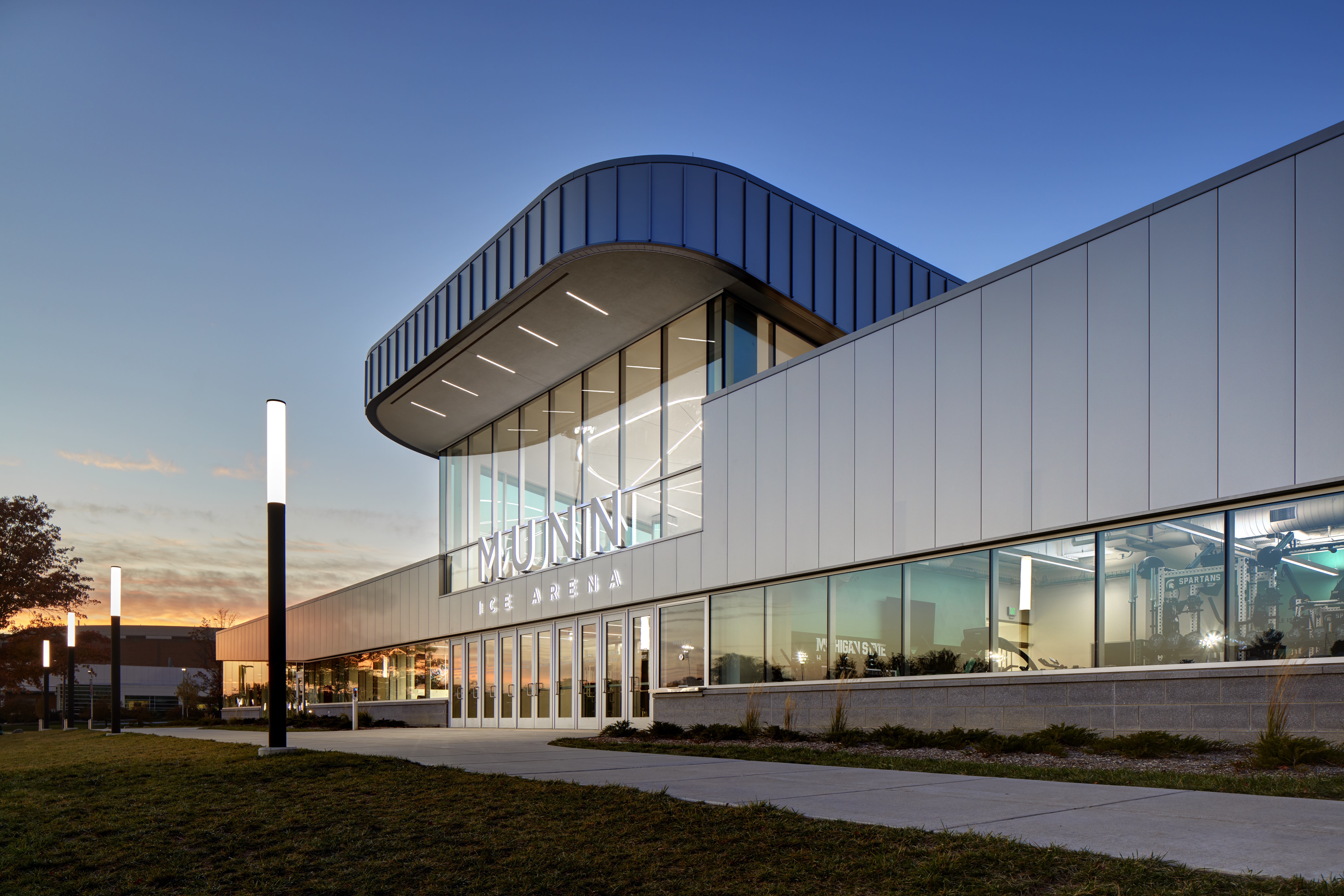The Campus Crossroads project – the largest building initiative in the history of the University of Notre Dame – sought to transform Notre Dame Stadium into a year-round hub for academic and student life. With the addition of Corbett Family Hall, Duncan Student Center and O’Neil Hall, the University has added approximately 800,000 SF of classroom, research, student life, media, performance, meeting, event, and hospitality space. The three new buildings bring together diverse disciplines to engage in a collaborative and multidisciplinary experience that enhances student life beyond seven Saturdays a year.
The renovation to the college football stadium includes new locker rooms for Notre Dame and the visiting team, upgraded concession stands and restroom facilities, a new video board, and the addition of television monitors throughout the concourse. Additional improvements include new, wider seating throughout the stadium. A redesigned concourse pays homage to the original stadium with vintage signage, art deco lighting, and bricked columns.
Innovative Approach to College Game Day
Early on, the team planned to phase the construction around the Fighting Irish’s home and away football schedule in such a manner that all work was completed with the stadium operating “business as usual” through two football seasons. Ensuring zero disruption to game-day activities is always the primary goal of any stadium construction team; our Team utilized virtual reality (VR) to visually communicate differences between construction and game-day logistics to the University. The 3D model was translated into a VR forum using Oculus glasses. Within the VR space, the University, and construction team were able to visualize the site as it would look on game day, including the placement of perimeter fencing and the Manitowoc 2250 crane that was unable to relocate prior to game day activities. Ultimately, the VR technology enabled the team to safely and efficiently layout the logistics necessary to achieve the University’s goal of proper and safe stadium gate access on game days.
